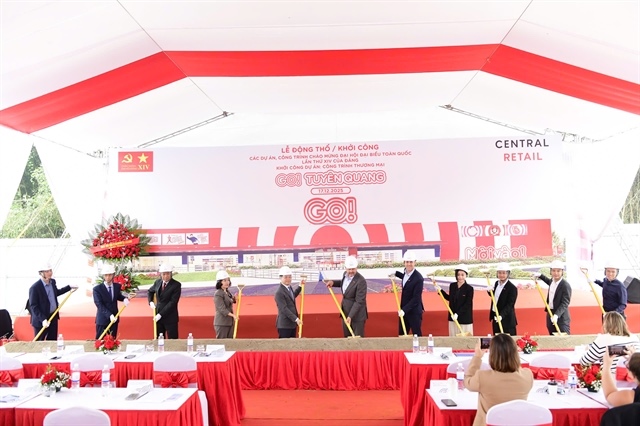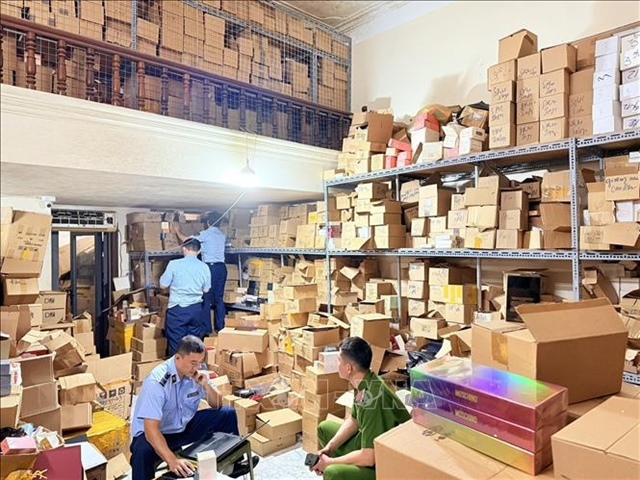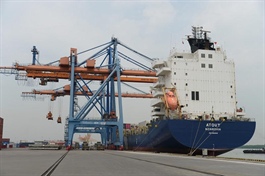More room to develop Viet Nam's international shipping fleet
More room to develop Viet Nam's international shipping fleet
The potential is great, but the development and operation of Vietnamese cargo shipping has not been commensurate with the role and position of the country.

In the project to develop Viet Nam's international shipping fleet by the Viet Nam Maritime Administration (Ministry of Transport), the administration said that the country's seaport system in recent years has developed relatively synchronously and modernly and is able to welcome some of the world's largest ships.
However, containers of goods imported and exported to/from Viet Nam is mainly handled by foreign shipping lines, especially on long-distance sea routes from/to developed countries such as Europe and the US.
The domestic fleet currently mainly undertakes domestic transportation and short international routes in Asia. The international shipping market share of Viet Nam's shipping fleet has been on a downward trend in recent years.
The fleet structure is not as good as it could be with mainly small tonnage ships carrying dry and bulk cargo. There is a lack of container ships and large tonnage ships operating on international routes.
There were 1,502 ships under the Vietnamese flag (excluding data of ships under construction) as of December last year, with a total tonnage of about 7.15 million GT and 11.7 million DWT.
The number of ships ranged from 1,000 to over 1,200 ships in the 2016-20 period.
The number of ships has decreased by over 200 last year compared to 2016, equivalent to a decrease of 17.2 per cent.
Compared with the 2010-15 period, Viet Nam's transport fleet has decreased by over 400 ships. However, the total tonnage of the transport fleet grew by over 6 per cent.
On the basis of the situation of the international transport market and the growth trend of goods through Viet Nam's seaports over the years, the maritime administration shows that there is a huge potential for developing an international shipping fleet.
However, Vietnamese shipping enterprises’ development and operation have not been commensurate with the role and position of the country.
The Viet Nam Maritime Administration proposed many solutions to develop Viet Nam's shipping in the 2021-26 period, with a vision for 2030.
Accordingly, the first is to renovate mechanisms and reform administrative procedures, creating a stable and favourable legal corridor to support businesses to operate effectively.
Regarding the financial solution, ship owners should be allowed to not pay VAT when importing ships to transport goods for Vietnamese goods owners until the end of 2026; exempt import tax and reduce 50 per cent of tonnage fees when ship owners buy and operate container ships of 1,500 TEUs or more or ships powered by clean energy and LNG carriers.
The State Bank of Viet Nam has a policy that allows Vietnamese ship owners who have ships operating on international routes with foreign currency revenue to be allowed to borrow foreign currency to invest in buying ships.
Another important solution is to improve the quality of crew members. The Viet Nam Maritime Administration recommends calling for private investment in human resource training, including domestic and foreign training.
There are policies and special incentives for employees of the shipping industry in order to encourage workers to stick with the work for a long time.
Speaking at a seminar on developing the Vietnamese international shipping fleet last week, Deputy Minister of Transport Nguyen Xuan Sang said that the ministry had been completing a project to develop the Vietnamese international shipping fleet with many synchronous solutions and a specific roadmap to submit to the Government to facilitate the development of not only the international shipping fleet but also the domestic fleet.
The deputy minister affirmed that he would continue to gather suggestions and opinions from businesses and associations to complete this important project in detail.





















